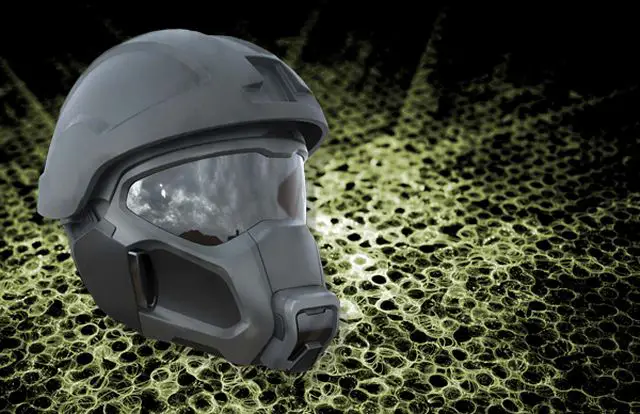United States Army to design next-generation of combat protective mask 1705143
| a | |||
New generation of protective mask |
|||
| Saturday, May 17, 2014 11:59 AM | |||
| United States Army to design next-generation of combat protective mask. | |||
In
2013, Edgewood Chemical Biological Center scientists began designing concepts
for the next generation of chemical, biological, radioactive and nuclear
respirators. They developed a fan embedded within the mask's filtration
system that uses less power, is lighter and is far less bulky than conventional
respirators. In addition to reduced weight and power requirements, this
system offers major improvements to the level of comfort and effectiveness
of the mask. |
|||
 U.S. Army researchers envision a fan embedded within the mask's filtration system that uses less power, is lighter and is far less bulky than conventional respirators. |
|||
| |
|||
| Technology
brings this relief to a Soldier through a powered air purifying respirator,
which consists of a hose connected to the face mask from a blower unit
and battery pack hanging off the hip or back. A typical respirator is
heavy and cumbersome, adding to the weight of the equipment troops already
carry. In test studies, a modified, commercial version of the M50 joint service general purpose mask has proven to be more comfortable to a Soldier, and maintains the same or greater effectiveness when crawling, running, or during rifle exercises and combat maneuvers. These technology demonstrations produced real-time data on mask protection factors, thermal sensation and comfort to the Soldier. Edgewood Chemical Biological Center's Respiratory Protection Branch continues to develop multiple technologies, anticipating integration with next-generation helmet and communication system designs and user needs. As
the team looks ahead, they anticipate a mask that is able to sense when
the fan needs to come on and when it should shut off based on physiological
monitoring, and the ability of the user to control the scalability (operational
mode) of the system: fan off, fan on with airflow just to the eye cavity
or fan on with airflow to both the eye cavity and nose cup. |
|||


























